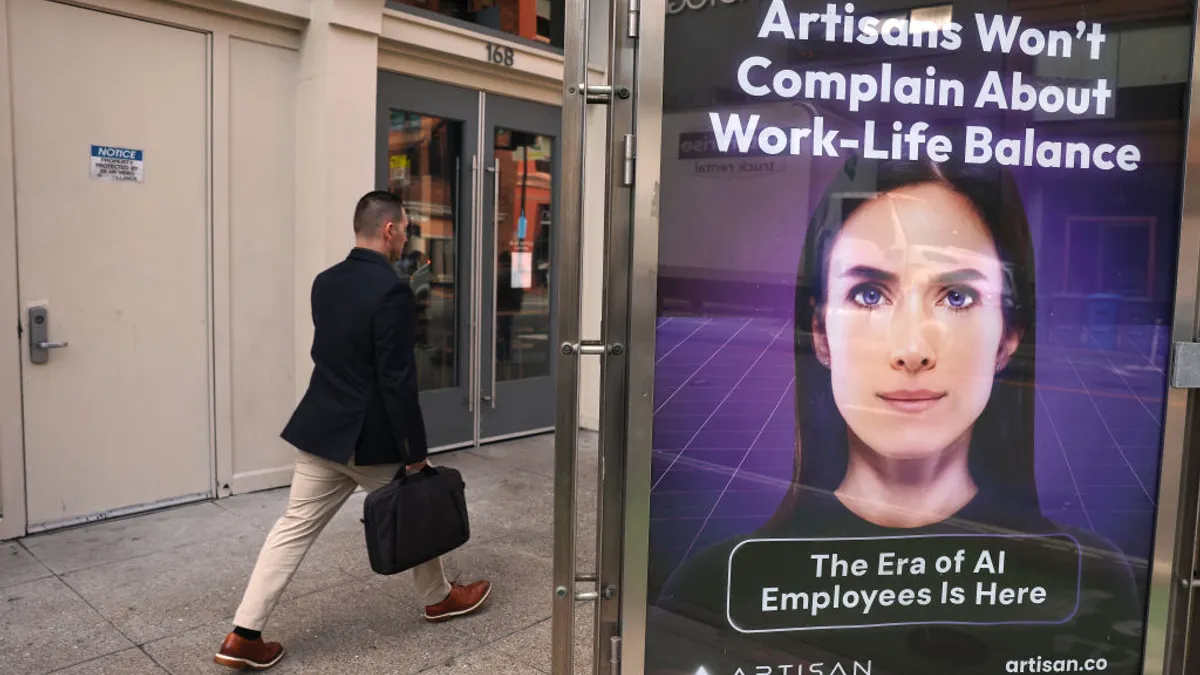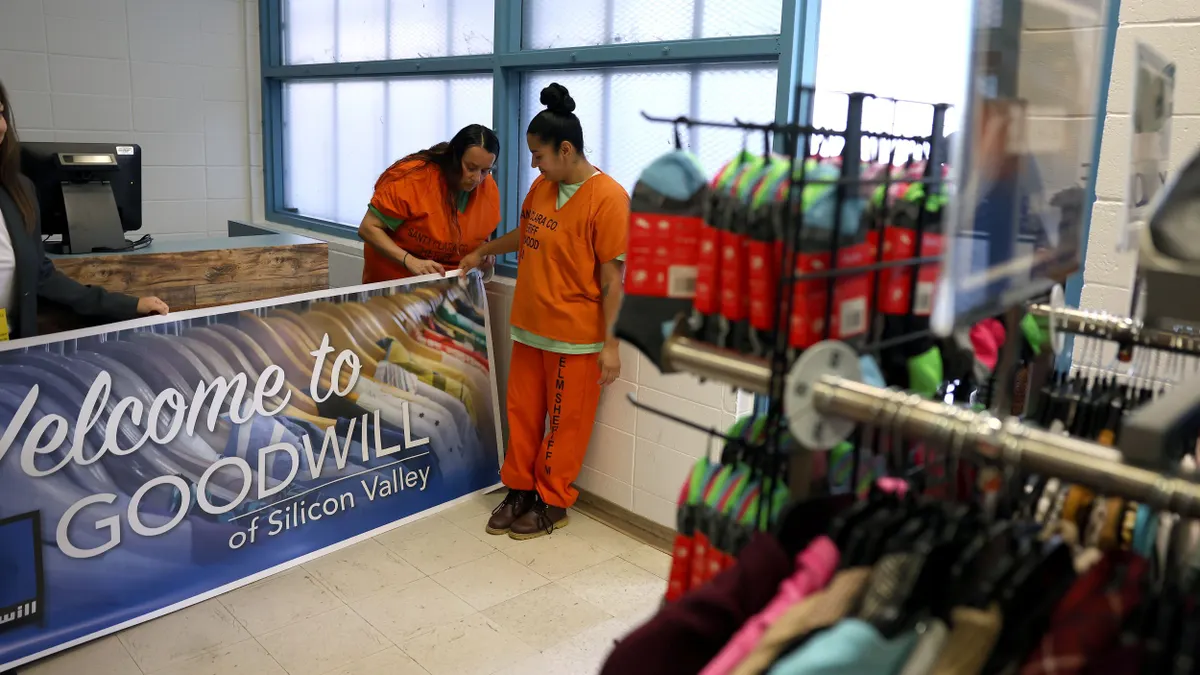For recruiting, it was predicted that 2018 would be the year of diversity hiring, predictive analytics, overhauled job listings and the rise of the gig economy. Those predictions largely came to fruition — with a few extra surprises.
Predictive analytics
The ability to use the data you may already have to predict job suitability in candidates and performance growth in existing employees may be news to some recruiters, but for many, it's a reality. From major players to savvy startups, employers are using data for candidate screening and talent management.
And when it comes to AI, there's no over-hyping the tech, according to Derek Herman, product marketing specialist at Phenom People. "It's under delivered by most companies 'promising to bring home the gold,'" he told HR Dive via email, but the potential is there. He suggests CHROs and talent leaders who haven't yet brushed up on AI technology do so to help them make the right investments.
"It is one of the most impactful areas that can affect spending time with the right candidates," he said. It can help employers find the most engaged candidates and pinpoint the best-performing talent. It can also measure ROI for campaigns — something invaluable for real-time decision-making.
Eddie Lou, executive chairman and co-founder of Shiftgig agreed. "Artificial Intelligence actually is affecting all aspects of HR/recruiting: candidate sourcing, screening and matching," he told HR Dive via email.
Diversity hiring
Diversity hiring was certainly a 2018 recruiting trend, but there's also no end in sight. Diversity and inclusion initiatives have proven themselves capable of not only creating a wider applicant pool but also improving employers' brands.
And 2019 will likely bring more of the same, according to Lou. As a board director for The Mom Project, a digital talent marketplace that connects women with employers, he said he's seen the company experience "huge growth in part given the demand for diversity hiring."
Rethinking job postings
Employers across industries took a second look at their job postings in 2018, working to remove language that might dissuade women, older applicants and other workers from applying and attempting to hone their messages. Branding is top of mind for many, and job postings are frequently individuals' first introduction to a company.
Extra focus on job listings has come with an added bonus, according to Jason Russell, director of North America total rewards at SAP. "When postings are sent back to managers to reword, the message is 'this is of value to the company,' reinforcing the commitment to a diverse and inclusive workplace," he said. And this impacts culture: "We send the message that we’re inclusive to candidates and strengthen that message with managers."
According to Herman, this has all required talent acquisition professionals to work on their marketing skills. Recruiters are becoming less like headhunters and more like job magnets with AI-powered technology that allows them to attract and identify the most qualified candidates, he said.
Gig workers
With predictions that up to 60% of the workforce will work independently by 2027, the rise of the gig worker doesn't seem to have been exaggerated. The use of contractors has enabled businesses to remain agile in times of economic uncertainty, and some workers say they're enjoying the flexibility that comes with being an independent contractor.
"In 2018, the gig economy played a major role in recruiting," AJ Brustein, co-founder and COO of Wonolo, told HR Dive in an email. "We saw a rise in both companies offering recruiting technology aimed at the gig economy, and in gig and contract workers turning to technology to find work."
The increasing prevalence of apps and websites dedicated to gig work demonstrates gig economy growth, according to Lou. "With unemployment below 4% and people demanding flexibility, over a hundred digital labor marketplaces have been created," he said. "Besides digital labor marketplaces, big enterprises, small companies, and even staffing companies are developing their own gig economy initiatives with internal resources or partnerships."
Russell cites SAP’s own efforts to become a more flexible work environment to attract and retain talent. While not historically open to part-timers, the company reassessed the value of giving employees options. Realizing that employee needs change, it introduced part-time options, even offering them the same benefits portfolio that full-timers enjoy. In the future, it plans to look into job-sharing opportunities as well.
A few surprises
While many 2018 recruiting predictions panned out, there were a few others that some didn't see coming.
For example, 2018 saw an unprecedented and unexpected seasonal hiring shortage, according to Brustein. Retailers, shippers, logistics and those in warehousing have been scrambling to find enough workers to meet heightened consumer demand ahead of the holiday season.
Likewise, it wasn't only predictive analytics leading recruiting tech this year. Herman said he believes the impact of conversational bots and SMS communications is unquestionable. "Every talent acquisition team in every Fortune 1000 company should be budgeting for these capabilities in 2019," he said.
Finally, Russell said that an underreported but significant trend for 2018 was employees' desire for a "mission-oriented" employer. Job seekers are looking for companies that do more than just provide a paycheck; they want to work for a company that demonstrates that it cares about the world. Employees also have made clear that they want to work for a company that reaches out and connects with them and even their family. Employees take their work home with them, and bring their home life to the office, Russell said; "When we can provide services or partner with companies that can help them, we boost our employee value proposition."


















